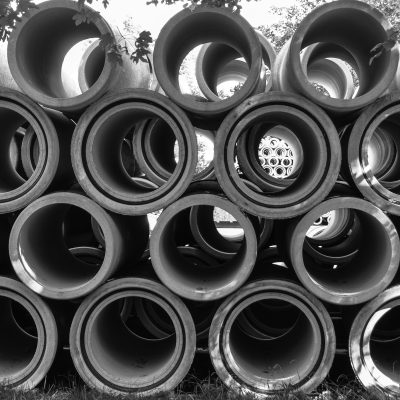Described by its publisher as a ‘generous selection’, Peter Gizzi’s Sky Burial: New & Selected Poems (Carcanet, 2019) is more of a waterfall or a plenitudal montage of thirty years of work, probably equivalent to four full collections glued together (though in fact it draws from seven collections, from 1992 to the present). The poems are continually arresting and expansive, containing Whitmanian multitudes. The result is enjoyably overwhelming, and makes Sky Burial a difficult book to review. There is so much interesting foam flying off these poems, that read like light glinting off stacked objects in an opened storage unit stuffed to the brim with salvage from the car boot of American poetry, or like Emily Dickinson listening to bees; ‘Like trains of cars on tracks of plush’.
Each collection and poem carries differences in preoccupations and in times: times of writing, of referents that carry their own times, and in the different ‘I’s-as-self-prophesying manifestations that Gizzi conjures. His poetic avatar, over the collection, is an unstable textural spectre/s arising across decades. I am interested in how parts of collections are recycled outside of their original contexts in volumes of ‘Selected Poems’, and in this instance Gizzi has decided not to delineate the start of separate collections within Sky Burial outside of the table of contents. This, I think, suits the atemporal present found in these often-lyric poems: the weird flattening effect of a ‘Selected Poems’ is that they can all seem to have been written just now, if you don’t poke at them too much. They participate in a kind of flexible repristination. Adjacently, Gizzi’s ongoing project involves exploring the self as constituted and re-constituted by language and writing poetry, as well as poetic text as a continuing participatory material in the world. The velocity of ‘Selected Poems’ as a concept is like Gizzi’s own poetic velocity: both are hopeful projects – to make things always new, recasting fragments or even prior poems, lyric conventions, or prior poetic selves. This is the hopeful project of being a poet, and the attendant responsibilities of poetry as a vocation, not only as a form of documentation, but as a form that is doubly and undefinably permeable of, and undefinably permeating, the changing textures of the world outside of the time of its making. In Gizzi’s case, this is also the project of being a poet writing upon the heavy waxy tablet of America with its pre-etched imperial language, his residential New England with its palimpsestic literary history, and the other wide-ranging, subsuming geographies of the ‘us’/ U.S. Corporation. Gizzi’s own term, ‘hopescape’, as an amalgamated description of some of his poems’ structures, spatial arenas, intentions, seems relevant here.
What arises in this present of regrouped poems is a wave of textual consciousness that is neither static nor completely disparate, but multiple, flowing and changing continually, but also never changing completely. It recalls the kind of changing consciousness outlined by the proto-psychologist and metaphysician William James, a line from whose essay ‘The Stream of Consciousness’ (1892) is used as an epigraph by Gizzi for a previous volume, In Defense of Nothing: Selected Poems 1987–2011: ‘The world contains consciousness as well as atoms – one must be written down as just as essential as the other.’ The shedding of this quote in Sky Burial perhaps reflects the continual remaking snowball of a textual voice whose consumption of its immediate predecessors – in this case, most frequently, nineteenth-century New Englanders such as William James, Emily Dickinson, Ralph Waldo Emerson, Henry David Thoreau and later on, Jack Spicer – has been subsumed deep into the poems, leaving the silent mouth free to move, or to go elsewhere. I think of Bataille writing on the horizons of mystical obscurity: ‘I imagine it is as in a vision, which is rendered sharp in darkness by the dilation of a pupil’. Here darkness (l’obscurite) is not the absence of light (or of sound) but absorption into the outside (dehors). This ‘outside’ is also a kind of ‘sky burial’. The collection takes its title from a Tibetan ritual where corpses are scattered by wild birds and the elements instead of being buried underground. The poems make me think more of a kind of burial of the self as made by, and kept within, a text, and the Lyric ‘I’ as a dead voice, living in the dead white space of the pages of books that fall into shadow, get mouldy or wet, get lost or thrown away, and perhaps, later, re-emerge. Gizzi’s preoccupation with clouds and the imaginal, metaphysical world reads to me as a kind of inverse ground-we-live-in, an outside-within-the-inside, and one that is reciprocal to the external world: the poems are equally shot through and weathered by elements, light and air in particular. Burial is also related to elegy, not only in terms of elegiac poems referring to personal losses, but in the way it evokes the living self that can only be captured already-dead through writing. I find Gizzi’s perspective on this fascinating – he revises elegy as a pre-emptive poetic mode that he describes as ‘throwing’ the voice:
‘The personal impersonal, the “you” speaking to “you,” a figure of besidedness like Hawthorne’s “Wakefield.” To embrace the amplification of self by standing next to oneself, outside of one’s life, to look at one’s self in and through the world – a form of discovery within the baffles of pronominal reality.
In my work I’m interested in this form of “vamping,” or “throwing” of the voice and placing it beside the speaker, or even pitched (this is so effective in Whitman and Dickinson) on the “other side of the river,” speaking – or singing! – back to me in time, to the beloved, to the reader, to imagine the “you” speaking back to me when I am no longer here to read it.’
Interleaving with these elegaic acts of self-doubling or prophetic othering are elegies that dwell on already existant personal losess. Sky Burial also contains ecological elegies, anti-pastorals and poems which propound a productive form of exhaustion that can grapple with an all-consuming industrial capitalism that spreads everywhere, even polluting the lyrical site of the air. Might poetic elegy, what Gizzi also describes as ‘this haunted preoccupation of poetry’, be a channel for the voice of the non-human? I am thinking here of Jacques Lacan describing the uncanniness of language via Paul Valéry: ‘the voice Which knows itself when it resounds / No longer to be no-one’s voice / But that of the waves and the woods?’ It’s language Valéry is speaking of here. And perhaps in the end, shouldn’t we recognise it, this voice, as the voice of no-one.’ No-one, or those who can’t speak. Strings of words vibrating on the blue of elegy, tying us to the voices of no-one and the absent; silver strings tying us to things we might in see our heads but that might not be there; strings tying us to things we can’t see but that are there; strings tying us to things we don’t know but might know; the blue-outlined cloud held like a balloon of the cover of Jack Spicer’s The Heads of the Town up to Aether (1962).
*
It might be noted that so far in this review I haven’t directly referred to any poems from Sky Burial. Before I read the collection, I came across Vahni Capildeo’s handwritten annotations on two of Gizzi’s poems in the Cambridge Literary Review. As squiggly thought-waves extending out from the poems, they draw attention to reading as an active extension to work, rather than as a form of decipherment, that can be smothering. Questions about reading and reviewing seem relevant to Sky Burial particularly, because Gizzi is very preoccupied by what poems are and how to approach them. Drawing notes as writing, or writing as a type of drawing, also emphasises the porosity of thresholds between media – like the thinness of the membranes in Gizzi’s poems between interior and exterior; representation and thing; imagination and action, consciousness being a space or world (mundus imaginalis) that comes across in the poems conceptually as semi-material, not only bio-chemically but agentically – as with the William James quote.
I am grateful for Capildeo’s annotations, as I initially found little to say about Sky Burial other than I liked it very much. I sat down and read it pretty much cover to cover and thought, what is the point of breaking these poems up into little pieces when they’re complete as they are? I am increasingly unsure why there is a need to review poems at all in this way. You wouldn’t lop a bit off a sculpture you really liked, or rip off a bit of a massive complicated painting in lieu of the whole thing, to then foist what you find particularly meaningful about this on someone else, like choosing an overload of one pick n mix flavour at the cinema. The whole glue of the poetic logic that holds the poem together comes apart. Correspondingly, I struggle with Ben Lerner’s (who is, incidentally, a Gizzi fan) idea that the best bits of poems are those embedded in the text of an essay. Should poets start writing reviews of their own imaginary poems instead of full collections? Reviewing as a controlling exercise in mediation seems even more senseless when we are already being guided enough by poetic gesture and reflective thought, by language, accident, and careful shaping, as in Gizzi’s poems that do this all perfectly well by themselves. There is enough stickiness in them already, and it seems pointless to undo their syncretism by extraction, their pacing as they fall quickly forward, and take us along with them.
The thing is, I really like fragments of text and reproductions as new work, particularly how photocopies of paintings make them strange – or isn’t this the same as poetic adaptation or creative translation, or perhaps writing at all. But what I like is when texts have been appropriated and altered knowingly and sometimes beyond recognition, which is not the same as when they appear within the apparent translucency of reviews. Then again, I can’t leave things alone if they interest me, the defining quality of interest perhaps being something that is not passive. On another tangent, perhaps the problem is actually that the poems in Sky Burial are so accomplished and – as hinted at above – the person who offers the most insight about these poems is Peter Gizzi himself, especially in interviews. This, however, is not always the case with poets! If anything, I wonder if Gizzi is too covered; he says it is like this, and I think, ‘Ah yes, it is like this to me, this feels very familiar, thank you for your account, it is a relief to me, I no longer feel so alone in thinking some things are this way, I had not thought of some things in that way.’ This feels nice, though a little complacent. But perhaps it is nicer to just enjoy things, sometimes. And what better time than now, to enjoy poems as they are.
To read an interview with Peter Gizzi, click here.




